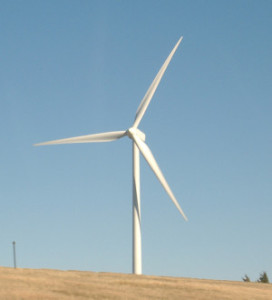GLENWOOD SPRINGS–Glenwood Springs made a show of signing a contract on June 1 with the Municipal Energy Agency of Nebraska (MEAN), which is part of the Nebraska Municipal Public Power collective (NMPP) claiming it “becomes the seventh city in the U.S. to be powered by all renewable energy.” The City Council unanimously approved a resolution on April 18 to purchase all of the city’s electricity from “clean wind power” sources provided by MEAN.
“We are very excited to announce that Glenwood Springs will soon be operated on 100% renewable electricity, making us the second municipality in Colorado to do so. Many cities and towns across the country have set aggressive targets, and we are doing our part today—our future is now,” said Mayor Jonathan Godes.
What Glenwood Springs is doing is paying MEAN to have enough renewable sources available to meet the city’s estimated electrical demand.
Chris Dibbern, General Counsel for MEAN told Complete Colorado that Glenwood Springs is getting its power from a 30MW wind farm in Kimball, Nebraska, but also has access to their pool of other renewables including up to 2MW of solar panel capacity and some methane generated from a landfill.
But directing output from a generating source to a specific customer is not how the Western Interconnection (grid) serving Glenwood Springs works, Dibbern acknowledged. The Western Interconnection runs from Western Canada south to Baja California in Mexico, and from the West Coast to the Great Plains.
According to the federal Department of Energy, “All of the electric utilities in the Western Interconnection are electrically tied together…”
The actual electricity being delivered may come from any of MEAN’s various generating sources including at least five coal-fired plants MEAN owns as well as electricity purchased from regional markets that may include electricity generated by coal, hydro, natural gas or nuclear plants hundreds of miles away.

An article by NMPP/MEAN Communications Specialist Kevil Wickham says, “An electron is an electron once produced. Electrons produced by renewable resources are mixed with electrons produced by more traditional baseload resources.”
“Baseload resources” are generating plants that supply electricity to the grid 24/7/365. By and large those plants are powered by coal, natural gas or oil and provide adequate stable power when renewables like wind and solar are not contributing.
The 100-percent renewables claim “relates to a financial arrangement rather than from an operational standpoint,” says Wickham.
Another problem is that the 30MW capacity of the Kimball windmill farm is based on its nameplate capacity. Nameplate capacity means “the maximum rated output of a generator under specific conditions designated by the manufacturer.”
But research shows that the disparity between what any generator is designed to produce under specific conditions and what it actually produces in service, especially as it gets older, can be significant.
The U.S. Energy Information Administration (EIA) puts the actual output of wind generation, depending on geographic location and seasonal patterns, at 25-40% of nameplate capacity.
The import of this is that to maintain the base load of the grid, renewables must be backed up by more traditional sources, including natural gas-fired “quick dispatch” plants that sit idle when overall production is adequate but which can start up at a moment’s notice to pick up the load when there is insufficient renewable generation.
Estimates are that backup generating capacity may have to be as large as 80%-90% of renewable capacity to ensure a stable, full-time grid.
The EIA says in 2018, renewables provided 17.6% of actual electricity generation in the United States.
The city says that its cost per megawatt-hour under the new contract will drop $5, from $51 to $46, but because the city needs to build a new electrical distribution substation at a cost of $2-2.5 million, city residents will not see lower electrical bills.
Dibbern said that their renewables pool is “somewhere around 50% committed” and that the power plan Glenwood Springs moved to is a lower-cost plan overall, despite the city “buying a more expensive product.”



Pingback: Glenwood Springs' dubious claim to 100 percent renewable electricity – Complete Colorado
Pingback: Glenwood Springs’ dubious claim to 100 percent renewable electricity – Complete Colorado – Page Two - Solar Saving Report